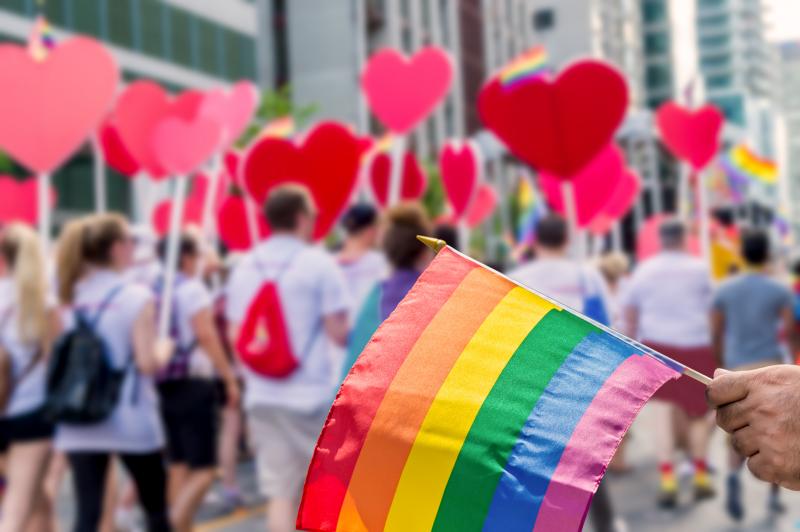
Community Advocacy Campaign: Where to Begin? Follow These 7 Steps.
Launching a community advocacy campaign can seem intimidating – where would you begin? There are countless campaign tools available to you, but they don’t mean anything if you don’t know what to do with them.
In this blog post, we’ll break down how to start a community advocacy campaign into simple, digestible steps, using the example of someone who wants to start an annual LGBTQ pride parade in his town. Let’s call him Todd.
- Set a Goal: What is the goal of your organization? When you are first considering creating a community advocacy campaign, you may have an overall mission. For example, Todd’s mission may be to make his community more welcoming to people who identify as LGBTQ. As great as this sounds, it is important to create a concrete goal to work towards. A good rule of thumb is to create a SMART goal - a goal that is Specific, Measurable, Achievable, Realistic, and Time-bound. An example of a SMART goal for Todd may be to create a more welcoming environment for LGBTQ community members by beginning an annual gay pride parade tradition in his town, starting in May 2020.
- Research similar groups: Are there people or groups in other communities that have done what you are trying to do? In the case of Todd’s LGBTQ parade, it would not be too difficult to find someone in another community who helped create an annual LGBTQ pride parade in their town. This can be a great resource for anyone both at the start of the campaign and throughout the course of the campaign.
- Build a Team: Who are the core team members? Often times, a small community advocacy campaign will not have any paid staff members and will instead rely on volunteers. However, this does not mean roles should not be assigned. Examples of roles in Todd’s advocacy campaign may be:
- Political director: In charge of working with key decision-makers – such as the town superintendent – to get permissions to throw the event
- Event planner: This person would organize the parade itself – what order people go in, what the process is, where people go after the parade
- Communications director: Takes the lead on getting support for the parade; and then for getting people to join the parade
- Sponsorship coordinator: In charge of getting partners and sponsors for the parade
- Create a Meeting Schedule: Will you hold weekly meetings? Monthly? Where will you meet, or will it be over the phone? This is very dependent on the availability of your core team members. In Todd’s case, he may choose to have weekly phone meetings with his core team members and in-person meetings with volunteers and supporters on a monthly basis.
- Create a Timeline: Even if you aren’t sure how long some steps may take, it’s important to set a timeline. It’s normal to move and adjust your timeline throughout the course of the campaign. However, you have to create an initial timeline to work off of. Here’s an example of what Todd’s timeline might start like this:
- March 1: Establish core team members and their roles
- March 15: Have first weekly core team meeting
- April 15: Have first volunteer meeting with at least 5 volunteers
- June 1: Secure approval from the town board to have the parade and set the date/location
It’s likely that throughout the course of your campaign, you learn that you can skip steps, you realize you have steps missing, or you notice that your timeline is off. Don’t be discouraged. This is normal and does not decrease the importance of setting benchmarks to strive towards.
- Get Fundraising: The first question to ask yourself is whether you need fundraising at all. In Todd’s case, he may not need direct monetary donations. Instead, he may need people to sponsor the parade or donate space to host meetings or the parade after-party. But if you do need fundraising, ask yourself where you plan to receive your funding – will you rely on small individual donations, or grants from private organizations? If it’s individual donors, find a strategy to get these donations, such as by creating a GoFundMe or throwing small events. If it’s grants from private organizations, research and apply to programs that are most likely to give you funding.
- Communications Strategy: How are you going to spread the word about your group or event? Will it be by handing out flyers, speaking at other organization’s meetings, advertising on social media, doing local TV or radio interviews, or something else? In some cases, it may be all of these things. In Todd’s case, he may decide social media is the best way to spread the word about his group and their first event. He might decide to create a Facebook group and event page and ask supportive people and organizations to share his event on their pages.
Don’t be afraid to turn your big idea into action. If Todd can do it, you can do it.
Wanna learn more about starting or running a community advocacy campaign? Reach out to The Campaign Workshop!